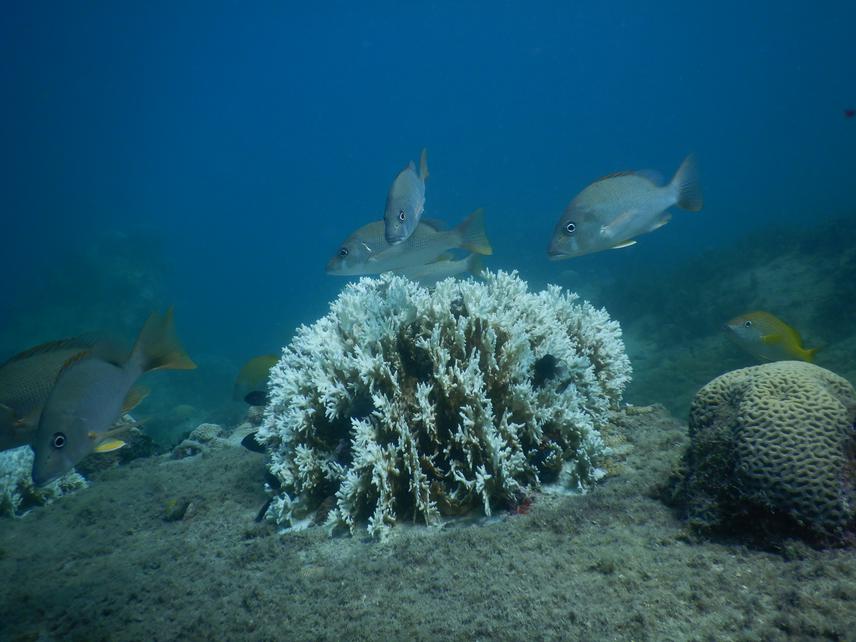Helder Coelho Guabiroba Jr
The aim of this project is to investigate the influence of human presence (here, diver presence will be used as a proxy to evaluate human presence) upon the distribution of reef fishes within a marine protected area subjected to different levels of human presence.

Reef fishes and a bleached colony of fire coral
Marine Protected Areas (MPAs) act as a key feature for environmental conservation as they exclude direct impacts such as fishing and other pervasive anthropogenic effects. Although MPAs are regarded as “safe havens” for biodiversity, the intense use of these areas by tourism may play a critical role on the community structure of fauna and flora.
While there has been considerable effort into quantifying the effects of humans and tourists disturbances on the physiology and behavior of terrestrial animals, much less work has focused on quantifying the effects on aquatic animals such as fish.
Understanding how fish assemblages behavior change with human presence (e.g. diver presence) will improve management strategies in search of a better use of Marine Protected Areas.
By deploying a stationary video experiment, it will be possible to evaluate how reef fish assemblages are structured in the presence and absence of humans. The experiment consists in setting the cameras stations somewhere in the reef and leave the area for 15 minutes. After this period, divers will return to the station area and stay swimming in a 5m diameter from the camera for another 15 minutes. A two meters distance will be set in front of camera in order to delimitate a standard area for analyzes. Sampling sites will be chosen based on the management regime (i.e. visited versus non visited areas) within the Abrolhos Archipelago.